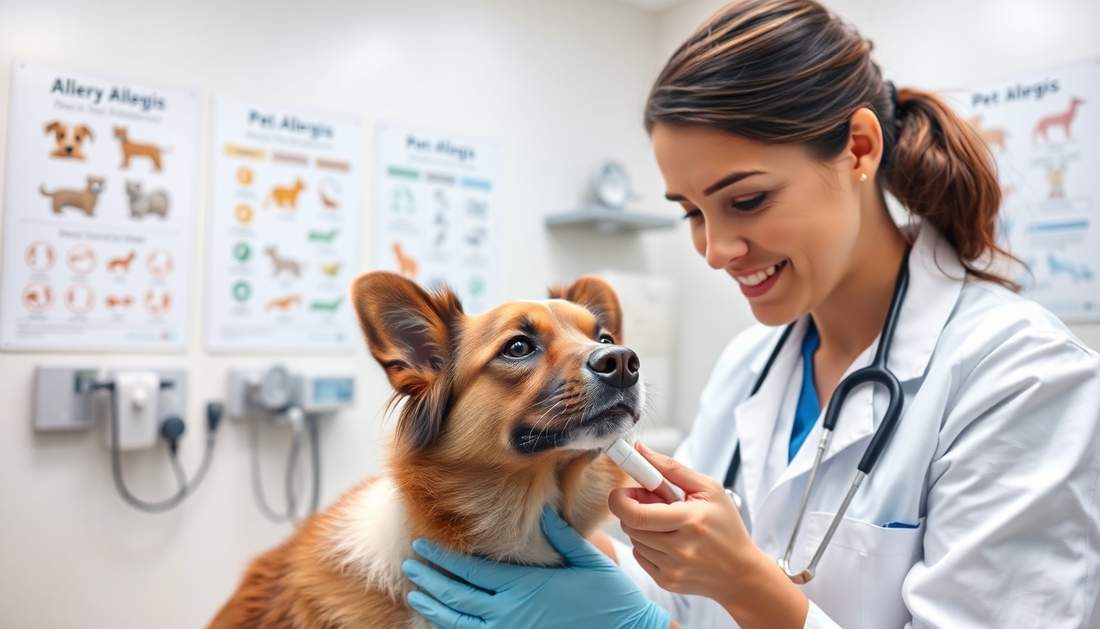
Unraveling the Mystery: What Is My Pet Allergic to?
Share
As pet owners, we want nothing more than to provide our furry companions with the best possible care. But sometimes, our pets can develop unexpected allergic reactions that leave us scratching our heads. What is my pet allergic to, and how can I help them find relief?
At Spot Pet Supply, we're dedicated to helping pet parents navigate the complexities of pet allergies. Through our reliable, everyday pet care solutions, we aim to empower you with the knowledge and tools to identify and manage your pet's allergic triggers.
Common Pet Allergy Types
Pets can develop allergies to a wide range of substances, just like their human counterparts. The most common types of pet allergies include:
Food Allergies
Many pets can be sensitive to certain ingredients in their food, such as proteins, grains, or preservatives. These food allergies can manifest in skin irritation, digestive issues, or even respiratory problems.
Environmental Allergies
Pollen, dust mites, mold, and even certain fabrics can trigger environmental allergies in pets. These allergens can cause itchy skin, sneezing, and other disruptive symptoms.
Seasonal Allergies
Just like humans, pets can experience seasonal allergies, often triggered by the blooming of plants or the presence of certain insects. These allergies may worsen during specific times of the year.
Skin Allergies
Pets can develop allergic reactions to various substances that come into contact with their skin, such as flea saliva, certain grooming products, or even their own bedding.
Symptoms to Watch For
Identifying the root cause of your pet's allergic reactions can be a bit of a detective game. Keep an eye out for the following signs that your furry friend may be experiencing an allergic response:
- Excessive scratching, licking, or biting of the skin
- Redness, inflammation, or hot spots on the skin
- Ear infections or ear irritation
- Sneezing, coughing, or other respiratory issues
- Digestive problems, such as vomiting or diarrhea
- Behavioral changes, like increased anxiety or restlessness
If you notice any of these symptoms, it's important to consult with your veterinarian to determine the underlying cause and develop an appropriate treatment plan.
Identifying Specific Allergens
Pinpointing the exact allergen that's causing your pet's discomfort can be a challenging process, but it's essential for effective management. Here are some common culprits to consider:
Food Allergies
The most common food allergens for pets include beef, dairy, chicken, wheat, and soy. An elimination diet, where you gradually introduce new foods, can help identify the specific trigger.
Environmental Allergies
Pollen from trees, grasses, and weeds, as well as dust mites and mold, are common environmental allergens. Your veterinarian may recommend allergy testing to pinpoint the specific triggers.
Household Allergens
Household items like cleaning products, laundry detergents, and even certain fabrics can cause skin irritation or respiratory issues in pets. Pay attention to any patterns in your pet's reactions.
Diagnostic Methods
To get to the bottom of your pet's allergic reactions, your veterinarian may recommend one or more of the following diagnostic methods:
Veterinary Allergy Testing
Your vet can perform intradermal or blood tests to identify the specific allergens your pet is reacting to, allowing for more targeted treatment.
Elimination Diets
By gradually introducing new food ingredients and monitoring your pet's response, your vet can help determine if a food allergy is the culprit.
Blood Tests
Analyzing your pet's blood can provide insights into the presence of certain antibodies, which can indicate the type of allergy your pet is experiencing.
Management and Treatment
Once you've identified the allergen(s) causing your pet's discomfort, the next step is to develop a comprehensive management plan. This may include:
Medication Options
Your veterinarian may prescribe antihistamines, corticosteroids, or other medications to help alleviate your pet's allergy symptoms.
Dietary Adjustments
If food allergies are the issue, switching to a hypoallergenic or limited-ingredient diet can make a significant difference.
Environmental Control Strategies
Regularly cleaning your home, using air purifiers, and avoiding exposure to known allergens can help minimize your pet's symptoms.
Prevention Tips
While we can't always prevent our pets from developing allergies, there are some proactive steps we can take to reduce the risk and manage their symptoms:
Regular Grooming
Frequent bathing and brushing can help remove pollen, dander, and other allergens from your pet's coat.
Cleaning Techniques
Vacuuming regularly, using HEPA air filters, and washing your pet's bedding in hot water can help minimize household allergens.
Choosing Hypoallergenic Products
Opt for pet-safe, hypoallergenic grooming products, cleaning supplies, and other household items to minimize your pet's exposure to potential irritants.
At Spot Pet Supply, we're committed to providing you with the resources and support you need to keep your furry friend happy and healthy, even in the face of allergies. By understanding the common triggers, recognizing the symptoms, and working closely with your veterinarian, you can help your pet find relief and enjoy a better quality of life.
